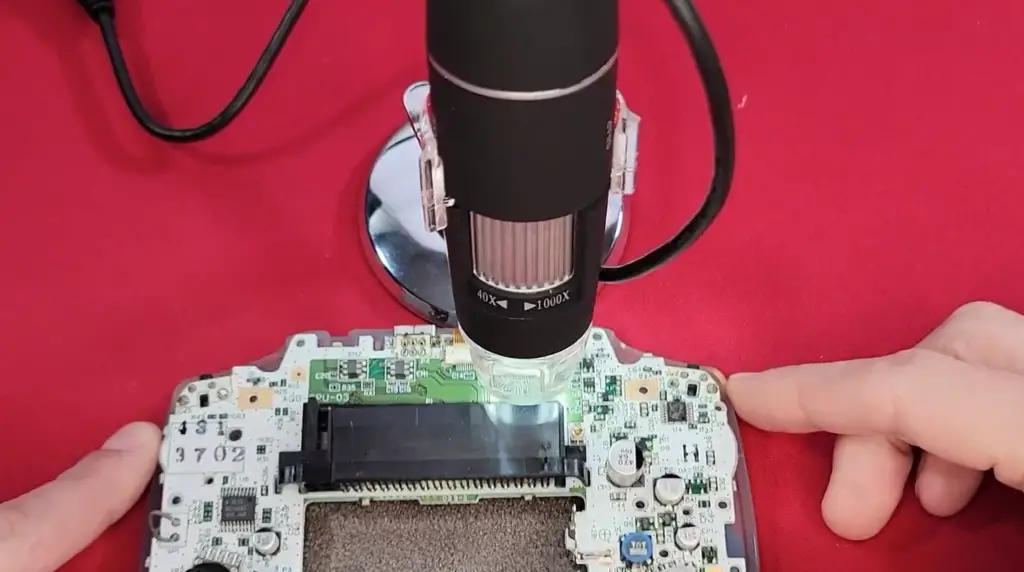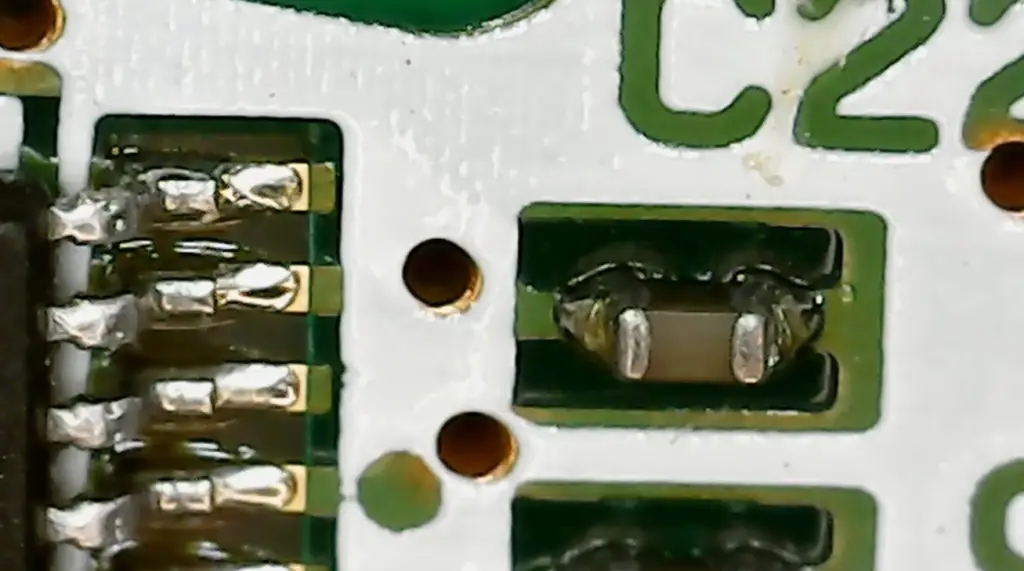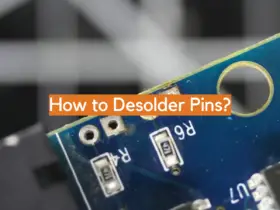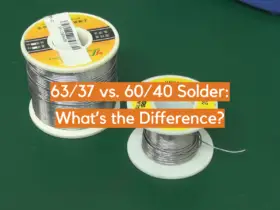Soldering is a precise task, and in order to do it well, you need the right tools. One of the most important pieces of equipment for soldering is a microscope or magnifying glass. But what if you don’t have access to a conventional microscope? Are digital microscopes good for soldering? This article will answer that question by exploring the pros and cons of digital and traditional microscopes for soldering. Plus, we’ll provide some useful tips to help you make the most out of your microscope. So let’s take a look at what you need to know about using digital microscopes for soldering!
What Is a Digital Microscope?

It has the same basic features as traditional microscopes, but with one key difference: instead of using eyepieces to view the specimen, you use a computer monitor or other display device. Digital microscopes are becoming increasingly popular because they offer users more flexibility and convenience than conventional microscopes. [2]
What is PCB soldering?
PCB soldering is the process of permanently connecting components to a printed circuit board (PCB) using solder. It involves heating up and melting a metal alloy that bonds electrical connections, along with the component-to-board interface. Soldering also seals off open circuit boards from environmental elements, such as moisture and dust.
Using micro soldering techniques, components with very small dimensions can be precisely soldered to a PCB. Professionals usually utilize a digital microscope during this process in order to gain more control and accuracy over the soldering technique. [2]
PCB soldering equipment
When it comes to soldering, a number of specialized tools are required. A high-quality digital microscope is one such tool that can be extremely useful when performing delicate work on printed circuit boards (PCBs). Digital microscopes allow you to view the solder points and connections in great detail and make sure that everything is connected accurately. [2]
Features of Digital Microscopes for Soldering
Stability and Versatility
Digital microscopes are great tools for soldering work, as they offer a wide range of features that make the task easier. For example, digital microscopes come with integrated stands and mounts which makes them incredibly stable. This allows you to move around without worrying about the microscope from shaking or moving too much while you work. [3]
Adjustable Magnification
In addition to their stability, digital microscopes also offer adjustable magnification. This allows you to zoom in or out depending on the size of the component you’re working with and get a better view of what you’re doing. This helps ensure that your soldering is accurate, as it gives you an up-close view of both the components and the solder. [3]
High Quality Images
Digital microscopes also give you high-quality images that can be very helpful when soldering. The clarity and detail of the image allows you to see even the smallest details so you can make sure your soldering is as precise as possible. This can also be useful for troubleshooting, as it allows you to easily identify any issues or potential problems with the soldering. [3]
Easy to Use
Another great feature of digital microscopes is that they are incredibly easy to use. With just a few clicks, you can quickly adjust the magnification and get a clear view of your work. This makes it easy for even beginner solderers to take advantage of digital microscopes and get professional results. [3]
Proper Lighting
Finally, digital microscopes also come with proper lighting to ensure that you have the best view possible. This helps make your soldering work easier and more accurate, as you won’t have to worry about shadows or glare obscuring your vision. [3]

Accommodating Work Space
No matter what type of soldering you’re doing, it’s important to make sure that your work space is properly set up. It should be well lit and have plenty of space so that you can easily maneuver the microscope around as needed. If possible, it’s also a good idea to invest in a dedicated stand for your digital microscope, as this will make it easier to move around and work with. [3]
How to choose the best digital microscope for soldering
Focus magnification
When it comes to soldering, focus magnification is the most important feature of a digital microscope. Most microscopes offer at least 10x to 100x magnification or more. The higher the magnification, the more detailed and clear an image will be. [1]
Vertical distance
Vertical distance is the distance between the object and the microscope lens. Most digital microscopes feature adjustable vertical distances, allowing you to get a better view of your soldering project. The greater the vertical distance, the easier it will be to focus on details of your project. [1]
Working surface
The working surface of a digital microscope should be large enough to accommodate your project. If you’re soldering a PCB board, for example, the working surface should be able to fit in the entirety of the board. [1]
Good lighting
Good lighting is essential for soldering projects. Most digital microscopes feature built-in LED lights or external lighting options that can illuminate your project, making it easier to see details and make accurate soldering connections. [1]
Good stand and flexibility
A good stand and flexible arms will help you position the microscope lens for precise placement. Look for a digital microscope with adjustable arms that can be adjusted to get the perfect angle and height for your soldering project. [1]

FAQ
What type of microscope is used for soldering?
Typically, binocular microscopes are used for soldering. Such microscopes feature two sets of lenses that work together to provide an up-close view of the object being worked on. The image produced is typically magnified up to 10 times its original size, allowing you to get a close and precise look at your work.
What is a digital microscope best used for?
Digital microscopes are best used for scientific applications, such as examining specimens and performing research. However, they can also be used in a variety of other tasks including soldering. Digital microscopes allow you to magnify an object up to 1000 times its original size and capture the image digitally so that it can be stored and shared with others.
What is the difference between a stereo microscope and digital microscope for soldering?
Stereo microscopes are primarily used in industrial settings, while digital microscopes are more suited for research and scientific applications. Stereo microscopes offer a two-dimensional view of the object being worked on, allowing you to get an up-close look at your work. Digital microscopes typically allow for magnifications up to 1000x and can capture images digitally, allowing you to store and share them with others.
What are the disadvantages of digital microscopy?
The main disadvantage of digital microscopy is that it can be more expensive and complex than stereo microscopes. Additionally, digital microscopes require a computer to operate and process the images being captured. Furthermore, when working on objects at higher magnifications, blurring and distortion may occur due to the limits of resolution.
Are digital microscopes better?
Digital microscopes offer higher magnifications and the ability to capture images digitally, making them well suited for research and scientific applications. However, stereo microscopes are typically cheaper and simpler to operate than digital microscopes, making them better suited for industrial tasks such as soldering. Ultimately, it depends on your specific needs as to which option is best for you.
What is one disadvantage of digital imaging?
One disadvantage of digital imaging is that the resolution limits can cause blurring and distortion when working with objects at higher magnifications. Additionally, digital microscopes require a computer to operate and process the images being captured, making them more expensive and complex than stereo microscopes.
Useful Video: Best Value USB Microscopes for Soldering?
Conclusion
To sum up, digital microscopes can be a great tool for soldering and other precision tasks. With a high-quality microscope that has adjustable levels of magnification and light control, you can clearly see the tiny details of your work. This allows you to make precise adjustments and achieve better results in a shorter amount of time. Digital microscopes are also easy to use and require minimal setup.
That being said, it is important to remember that not all digital microscopes are created equal. When shopping for a microscope for soldering, make sure you look at quality, magnifaction levels, light control, and additional features such as software capabilities. With the right digital microscope, you can easily take your soldering skills to the next level.
Good luck and happy soldering!
References
- https://www.opticalmechanics.com/digital-microscope-for-soldering/
- https://www.yamanelectronics.com/best-digital-soldering-microscopes/
- https://digitalmicroscopejournal.com/blog/digital-soldering-microscopes/














Leave a Reply